Fecal microbiota transplantation for irritable bowel syndrome: An intervention for the 21st century
- PMID: 34168399
- PMCID: PMC8192290
- DOI: 10.3748/wjg.v27.i22.2921
Fecal microbiota transplantation for irritable bowel syndrome: An intervention for the 21st century
Abstract
Irritable bowel syndrome (IBS) affects about 12% of the global population. Although IBS does not develop into a serious disease or increase mortality, it results in a considerable reduction in the quality of life. The etiology of IBS is not known, but the intestinal microbiota appears to play a pivotal role in its pathophysiology. There is no effective treatment for IBS, and so the applied treatments clinically focus on symptom relief. Fecal microbiota transplantation (FMT), an old Chinese treatment, has been applied to IBS patients in seven randomized controlled trials (RCTs). Positive effects on IBS symptoms in various degrees were obtained in four of these RCTs, while there was no effect in the remaining three. Across the seven RCTs there were marked differences in the selection processes for the donor and treated patients, the transplant dose, the route of administration, and the methods used to measure how the patients responded to FMT. The present frontier discusses these differences and proposes: (1) criteria for selecting an effective donor (superdonor); (2) selection criteria for patients that are suitable for FMT; (3) the optimal FMT dose; and (4) the route of transplant administration. FMT appears to be safe, with only mild, self-limiting side effects of abdominal pain, cramping, tenderness, diarrhea, and constipation. Although it is early to speculate about the mechanisms underlying the effects of FMT, the available data suggest that changes in the intestinal bacteria accompanied by changes in fermentation patterns and fermentation products (specifically short-chain fatty acids) play an important role in improving the IBS symptoms seen after FMT. FMT appears to be a promising treatment for IBS, but further studies are needed before it can be applied in everyday clinical practice.
Keywords: Butyric acid; Enteroendocrine cells; Etiology; Microbiota; Short-chain fatty acids; Superdonor; Therapy.
©The Author(s) 2021. Published by Baishideng Publishing Group Inc. All rights reserved.
Conflict of interest statement
Conflict-of-interest statement: The authors declare that they have no conflict of interest.
Figures


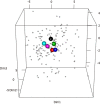
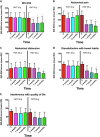
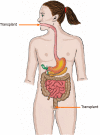
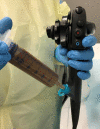


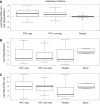
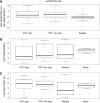
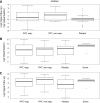






Similar articles
-
Current status of fecal microbiota transplantation for irritable bowel syndrome.Neurogastroenterol Motil. 2021 Nov;33(11):e14157. doi: 10.1111/nmo.14157. Epub 2021 Jul 8. Neurogastroenterol Motil. 2021. PMID: 34236740
-
Clinical response to fecal microbiota transplantation in patients with diarrhea-predominant irritable bowel syndrome is associated with normalization of fecal microbiota composition and short-chain fatty acid levels.Scand J Gastroenterol. 2019 Jun;54(6):690-699. doi: 10.1080/00365521.2019.1624815. Epub 2019 Jun 13. Scand J Gastroenterol. 2019. PMID: 31190584 Clinical Trial.
-
Changes in fecal short-chain fatty acids following fecal microbiota transplantation in patients with irritable bowel syndrome.Neurogastroenterol Motil. 2021 Feb;33(2):e13983. doi: 10.1111/nmo.13983. Epub 2020 Sep 17. Neurogastroenterol Motil. 2021. PMID: 32945066 Free PMC article. Clinical Trial.
-
Responses to faecal microbiota transplantation in female and male patients with irritable bowel syndrome.World J Gastroenterol. 2021 May 14;27(18):2219-2237. doi: 10.3748/wjg.v27.i18.2219. World J Gastroenterol. 2021. PMID: 34025075 Free PMC article. Clinical Trial.
-
Fecal microbiota transplantation for managing irritable bowel syndrome.Expert Rev Gastroenterol Hepatol. 2018 May;12(5):439-445. doi: 10.1080/17474124.2018.1447380. Epub 2018 Mar 8. Expert Rev Gastroenterol Hepatol. 2018. PMID: 29493330 Review.
Cited by
-
From Gut to Eye: Exploring the Role of Microbiome Imbalance in Ocular Diseases.J Clin Med. 2024 Sep 21;13(18):5611. doi: 10.3390/jcm13185611. J Clin Med. 2024. PMID: 39337098 Free PMC article. Review.
-
Gut microbiota derived from fecal microbiota transplantation enhances body weight of Mimas squabs.Anim Biosci. 2024 Aug;37(8):1428-1439. doi: 10.5713/ab.23.0475. Epub 2024 Apr 1. Anim Biosci. 2024. PMID: 38575121 Free PMC article.
-
Fecal microbiota transplantation in irritable bowel syndrome: A meta-analysis of randomized controlled trials.Front Med (Lausanne). 2022 Nov 3;9:1039284. doi: 10.3389/fmed.2022.1039284. eCollection 2022. Front Med (Lausanne). 2022. PMID: 36405622 Free PMC article.
-
Fecal microbiota transplantation for irritable bowel syndrome: a systematic review and meta-analysis of randomized controlled trials.Front Immunol. 2023 May 18;14:1136343. doi: 10.3389/fimmu.2023.1136343. eCollection 2023. Front Immunol. 2023. PMID: 37275867 Free PMC article.
-
Role of GDNF, GFRα1 and GFAP in a Bifidobacterium-Intervention Induced Mouse Model of Intestinal Neuronal Dysplasia.Front Pediatr. 2022 Jan 14;9:795678. doi: 10.3389/fped.2021.795678. eCollection 2021. Front Pediatr. 2022. PMID: 35096711 Free PMC article.
References
-
- Konturek PC, Brzozowski T, Konturek SJ. Stress and the gut: pathophysiology, clinical consequences, diagnostic approach and treatment options. J Physiol Pharmacol. 2011;62:591–599. - PubMed
Publication types
MeSH terms
Substances
LinkOut - more resources
Full Text Sources

